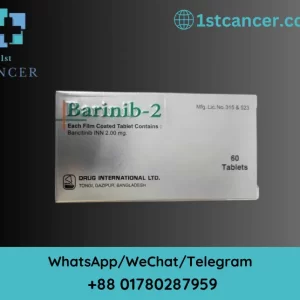In the realm of hematologic therapies, Eltrombopag (Elopag) emerges as a key player. Offering a targeted approach to address thrombocytopenia and revolutionize the management of various hematologic disorders. From its innovative mechanism of action to its diverse clinical applications. This article explores the multifaceted role of Eltrombopag (Elopag) in elevating platelet counts and enhancing patient outcomes.
Introduction of Eltrombopag (Elopag):
In the intricate tapestry of hematologic therapeutics. Eltrombopag emerges as a groundbreaking agent.

Wielding its unique mechanism of action to address thrombocytopenia and revolutionize the management of diverse hematologic disorders. This introduction delves into the transformative journey of Eltrombopag (Elopag). Exploring its mechanism of action, and clinical indications. The pivotal role it plays in elevating platelet counts to enhance patient outcomes.
Unravelling the Mechanism of Action:
At the heart of Eltrombopag’s prowess lies a distinctive mechanism of action that sets it apart in the realm of platelet modulation. Acting as a thrombopoietin receptor (TPO-R) agonist, Eltrombopag (Elopag) stimulates the production of platelets, playing a pivotal role in hemostasis. This innovative approach distinguishes Eltrombopag from conventional treatments, offering a targeted and effective strategy for managing thrombocytopenia.
Clinical Applications Across Hematologic Landscapes:
Eltrombopag’s versatility is evident in its diverse clinical applications. Initially recognized for its efficacy in immune thrombocytopenia (ITP). Eltrombopag (Elopag) serves as a second-line option for patients unresponsive to conventional treatments. Beyond ITP, Its therapeutic reach extends to addressing thrombocytopenia associated with chronic hepatitis C. Showcasing its adaptability in diverse hematologic contexts.
Addressing Thrombocytopenia in Chronic Liver Disease:
Chronic liver disease often manifests with thrombocytopenia. Posing challenges in the management of these patients. Particularly during invasive procedures. Eltrombopag’s ability to stimulate platelet production has proven instrumental in addressing thrombocytopenia in the context of chronic liver disease. By optimizing platelet counts, Eltrombopag (Elopag) facilitates safer interventions and contributes to an enhanced standard of care for individuals with hepatic conditions.
Pediatric Hematology: Tailoring Solutions for Young Patients:
The therapeutic reach of Eltrombopag isn’t confined to adults. It extends to the realm of pediatric haematology. In children with chronic ITP. Eltrombopag (Elopag) has demonstrated promise as a treatment option. Reflects a commitment to tailoring therapies for diverse patient populations and addressing the unique challenges presented by hematologic disorders in the pediatric setting.
Exploration of Novel Combinations and Future Frontiers:
As the landscape of hematologic research evolves. Eltrombopag (Elopag) finds itself at the forefront of exploration in novel combinations with other therapeutic agents. Combinatorial approaches aim not only to enhance its efficacy but also to reduce treatment burdens and refine its role in various hematologic conditions. The ongoing research into Eltrombopag holds the promise of uncovering new horizons in the field of platelet modulation.
Ensuring Safety Through Comprehensive Monitoring:
While Eltrombopag offers significant therapeutic benefits. A comprehensive understanding of its safety profile is paramount. Regular monitoring of liver function and potential adverse events ensures a holistic approach to patient care. Optimizing treatment outcomes while mitigating potential risks associated with Eltrombopag (Elopag) therapy.
Patient-Centric Care: Elevating Quality of Life:
Beyond its clinical efficacy, Eltrombopag epitomizes a patient-centric approach by not only addressing the biological aspects of thrombocytopenia but also enhancing the broader quality of life. By providing a targeted and effective means of elevating platelet counts. Eltrombopag (Elopag) empowers patients to navigate daily activities with reduced concerns about bleeding complications.
In the ensuing sections, this article will delve deeper into Eltrombopag’s mechanism of action. Clinical applications, safety considerations, and the dynamic landscape of ongoing research. Painting a comprehensive portrait of this hematologic breakthrough. Eltrombopag’s journey is a testament to the ever-evolving field of platelet modulation. Offering hope and transformative possibilities for individuals navigating the complexities of hematologic disorders.
Background of Eltrombopag (Elopag):
The development of Eltrombopag (Elopag) is rooted in a quest to address a critical hematologic challenge. Thrombocytopenia. Thrombocytopenia is characterized by a low platelet count. Poses significant risks of bleeding and hampers the overall management of various hematologic disorders. Eltrombopag’s evolution is a testament to the relentless pursuit of targeted therapies aimed at elevating platelet counts and transforming the landscape of hematologic care.
Origins in Thrombopoiesis Understanding:
Eltrombopag’s journey begins with a deep understanding of thrombopoiesis, the complex process of platelet production. Thrombopoietin, a hormone crucial for platelet formation. Acts through its receptor (TPO-R) to stimulate the production and maturation of megakaryocytes, the precursor cells of platelets. Recognizing the pivotal role of this pathway in platelet regulation laid the foundation for the development of Eltrombopag (Elopag).
Thrombocytopenia in Immune Thrombocytopenia (ITP):
The initial focus of Eltrombopag’s development centred on addressing thrombocytopenia in immune thrombocytopenia (ITP). ITP is an autoimmune disorder characterized by the destruction of platelets. Often necessitates therapeutic interventions to elevate platelet counts and mitigate bleeding risks. Eltrombopag (Elopag), As a thrombopoietin receptor agonist. Offered a targeted approach to stimulate platelet production. Providing an alternative for patients unresponsive to conventional treatments.
Clinical Success and Expansion to Chronic Hepatitis C:
Eltrombopag’s success in ITP paved the way for its exploration in diverse hematologic contexts. Notably, it found utility in the management of thrombocytopenia associated with chronic hepatitis C. Where liver dysfunction often leads to reduced platelet production. By acting directly on the thrombopoietin pathway. Eltrombopag (Elopag) demonstrated its efficacy in optimizing platelet counts in this distinct clinical setting. Expanding its therapeutic footprint.
Addressing Thrombocytopenia in Chronic Liver Disease:
Chronic liver disease represents another pivotal backdrop for Eltrombopag’s application. Thrombocytopenia in this context is multifactorial. Involving compromised liver function and impaired thrombopoiesis. Eltrombopag’s ability to stimulate megakaryocyte maturation and increase platelet production positioned it as a targeted intervention. Offering not just a numerical increase in platelets but a potential improvement in overall hemostatic function.
Pediatric Hematology: Extending the Scope:
The evolution of Eltrombopag (Elopag) doesn’t exclude the pediatric population. Recognizing the unique challenges of hematologic disorders in children. Particularly chronic ITP, research endeavours extended Eltrombopag’s exploration to pediatric haematology. This extension underscored the commitment to tailoring therapeutic solutions for diverse patient demographics.
A Platform for Ongoing Research:
Eltrombopag’s background is not static. it serves as a dynamic platform for ongoing research and development. The exploration of novel combinations, and refinement of dosing strategies. Investigations into its broader applications in diverse hematologic conditions represent the current frontier. This continuous exploration aligns with the broader goal of refining and personalizing hematologic therapies.
In essence, Eltrombopag’s background is woven into the fabric of hematologic innovation. With its origins in a nuanced understanding of platelet regulation. From ITP to chronic hepatitis C and beyond. Eltrombopag’s journey reflects a commitment to addressing thrombocytopenia across diverse clinical scenarios. Offering a targeted and transformative approach to platelet modulation in the intricate landscape of hematologic care.
Mechanism of Action Eltrombopag (Elopag):
Eltrombopag’s transformative impact on platelet modulation stems from its unique mechanism of action. Which intricately engages with the thrombopoietin receptor (TPO-R) pathway. Unraveling a sophisticated process that empowers megakaryocytes and ultimately elevates platelet counts.
1. Thrombopoietin Receptor Agonism:
At the core of Eltrombopag’s mechanism is its role as a thrombopoietin receptor agonist. Thrombopoietin, a hormone predominantly produced in the liver, is central to the regulation of platelet production. Eltrombopag (Elopag) mimics the action of thrombopoietin by binding to and activating the TPO-R on the surface of megakaryocytes. The precursor cells of platelets.
2. Stimulation of Megakaryocyte Maturation:
Activation of the TPO-R initiates a cascade of signaling events within megakaryocytes. This signaling cascade stimulates the maturation and differentiation of megakaryocytes. Enhancing their ability to produce platelets. Eltrombopag’s role as a TPO-R agonist, therefore, acts as a catalyst in the complex process of thrombopoiesis.
3. Increased Platelet Production:
By enhancing megakaryocyte maturation. Eltrombopag (Elopag) leads to a substantial increase in platelet production. This effect is particularly crucial in conditions where thrombocytopenia arises due to inadequate platelet generation. Eltrombopag’s targeted stimulation of the TPO-R directly addresses this deficiency. Providing a pharmacologic solution to elevate platelet counts.
4. Homeostatic Balance and Hemostasis:
The elevation in platelet counts achieved through Eltrombopag’s mechanism of action contributes to restoring the delicate balance of hemostasis. Platelets play a pivotal role in blood clotting and wound healing. Their adequate numbers are essential to prevent bleeding complications. Eltrombopag’s intervention directly addresses this balance. Reducing the risk of bleeding events associated with thrombocytopenia.
5. Adaptive Dosing Strategies:
Eltrombopag’s mechanism of action allows for a degree of adaptability in dosing strategies. Tailoring the dosage based on individual patient responses ensures a personalized approach to therapy. This adaptability contributes to optimizing the therapeutic efficacy of Eltrombopag (Elopag) while minimizing potential side effects.
6. Insights for Clinical Applications:
Understanding Eltrombopag’s mechanism of action provides insights into its clinical applications. From immune thrombocytopenia (ITP) to chronic hepatitis C-associated thrombocytopenia and beyond. Eltrombopag’s ability to directly influence platelet production positions it as a targeted intervention for various hematologic conditions.
7. Ongoing Research and Future Frontiers:
The ongoing exploration of Eltrombopag’s mechanism of action fuels research into novel combinations, and dosing strategies. Its application in diverse hematologic contexts. This continuous investigation reflects the dynamic nature of Eltrombopag’s role in platelet modulation and hints at potential future horizons in hematologic care.
In essence, Eltrombopag’s mechanism of action orchestrates a symphony within the realm of platelet modulation. Offering a targeted and efficacious means to address thrombocytopenia. By engaging with the thrombopoietin receptor pathway. Eltrombopag (Elopag) emerges as a pharmacologic conductor. Guiding megakaryocytes toward enhanced platelet production. Empowering patients with hematologic disorders to navigate the complexities of hemostasis with renewed platelet counts.





